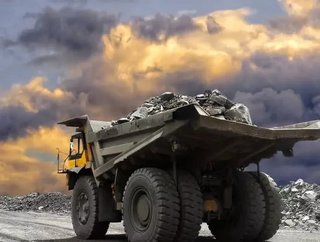PwC Canada: The mining industry of British Columbia 2016-17

Over the next two days, Mining Global will be focusing on PwC’s latest reports into the mining industry. Today, we look at the mining industry of British Columbia.
PwC Canada has released its latest report, Building for the future The mining industry in British Columbia 2016, in which it takes a close look at the mining industry of 2016, today in 2017, and where it looks to be heading in the not too distant future.
Canadian coal
British Columbia, first and foremost, is the largest exporter of metallurgical coal and one of its largest copper producers. Not to be left out, BC also produces significant amounts of gold, silver, lead and zinc.
A challenging year, a challenge of change
“2016 was another challenging year for the industry due to the continued volatility in global metal and mineral prices. That said, the picture began to brighten towards the end of 2016. The price of some global commodities, in particular coal and copper, started to pick up again towards the end of year and held their ground into the first part of 2017,”
Prices have begun to remain at a more stable place, providing a more optimistic outlook on the industry and increased investment.
This is certainly the case for Conuma Coal, which prchased three mines from Walter Energy and reopened two, with the third on its way this summer. It’s not all acquisitions though, the Brucejack mine is set to begin commercial production and the KSM project is actively seeking investors to move forward.
“BC is known across Canada and internationally as an attractive place to invest due to its rich resources, stable political climate, world-class infrastructure, highly skilled workforce and access to Asian markets through a sophisticated port system.”
Reporting for duty
The report highlights the outcome of a major survey prepared by PwC, which included 28 participants, which comprised of 14 operating mines, three projects in the exploration stage, nine in the permitting or environmental assessment stage, one smelter operation, and one in the care and maintenance stage.
Upward revenue streams
The report asks the question, is the worst over in the lastest mining industry economic downturn? And while it can be argued that yes it has, cautious optimism is a feeling shared across the whole industry. Prices for some major metal and resource groups rose and/or stabalised in 2016 and have continued to do so in Q1 for 2017.
Mining activity in BC highlights that optimism, with new mines openinng and coal mining operations previously in care and maintenance moving out and restarting.
Crunching the numbers...

In 2016, gross mining revenue rose to $8.7 billion from the previous year ($7.7 billion). Net mining revenues came in at $7.3 billion up from $6.3 billion in 2015, driven by an increase in gross mining revenue and a decrease in smelting and refining charges and freight costs.
Cash flow from operations, another key measure of the industry’s health, was $2.6 billion in 2016, up over $900 million from $1.7 billion in 2015.
“All in all, it was a positive year for the BC mining industry, admittedly largely driven by coking coal’s strong performance which has seen mines re-open during the year. This is great news for the impacted local communities. 2017 promises more growth with the Brucejack mine coming on stream and so there are good reasons to be optimistic.”
Back to work

Conuma Coal Resources Ltd. is a key player in the turnaround of job opportunities after buying the Brule, Wolverine and Willow Creek mines out of bankruptcy protection from Walter Energy last fall, amid improving prices for metallurgical coal.
The Brule mine saw 170 people back in work and with plans of opening the Willow Creek Mine Conuma and all three mines will employ around 700 people.
The Mining Association of British Columbia has its say
“There are reasons to be optimistic about the mining industry today, especially here in BC.”
More and more investors are identifying BC as a safe, mining friendly jurisdiction with rich resources, world-class infrastructure, a highly skilled workforce and access to Asian markets through a sophisticated port system.
Government and industry collaboration is helping many companies stabilise operations amid growing cost pressures, with a five-year electricity power rate deferral program just one example of this, looking to reduce the PST on electricity significantly by 2019. Electricity amounts for the second largest costs at most mines, behind labour.
“The BC mining industry is on solid ground as we head into the second half of 2017. More capital is slowly becoming available for junior companies and their smaller projects, while larger operators are beginning to boost investment to help build a more sustainable industry for the future.
While we need to remain cautious about the cyclical nature of the mining industry, there’s reason to feel upbeat. Better times are ahead for the mining industry — and in particular mining in BC.”
Karina Briño was the president and CEO of the BC Mining Association for six years
The future is bright
“While it may be too soon to call it a recovery, the outlook is brighter today than it has in been in recent years,”
“While several challenges remain — including the volatility of commodity prices, keeping costs down, and attracting more investment in the short and long term — the future looks promising.
From our perspective, BC’s mining industry should be commended for its endurance during the past six years of the latest mining cycle downturn. It hasn’t been easy, of course, and tough decisions were made by companies in order to survive.”
Tomorrow, sticking with our focus on PwC, we join the company as it demands that “we need to talk about the future of mining”






